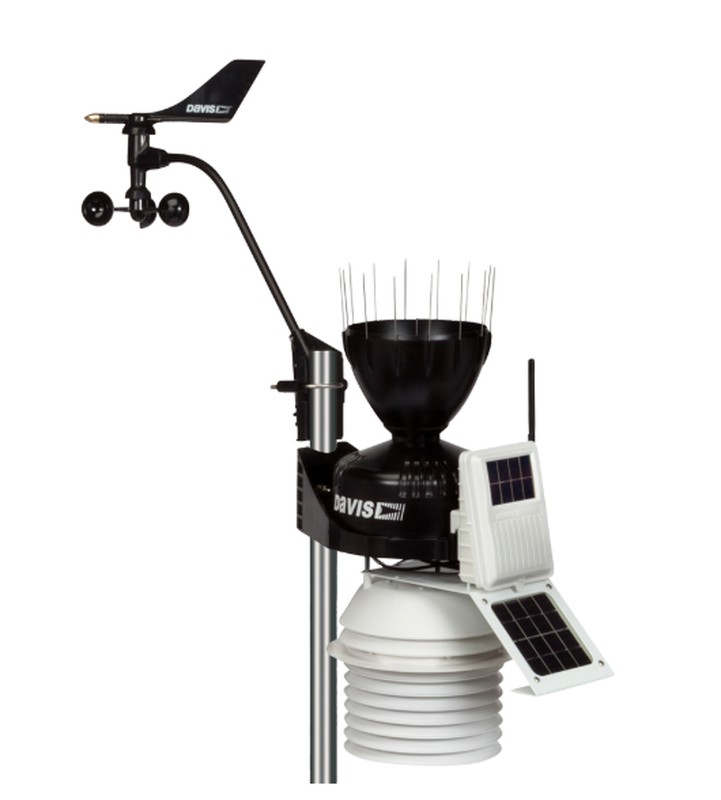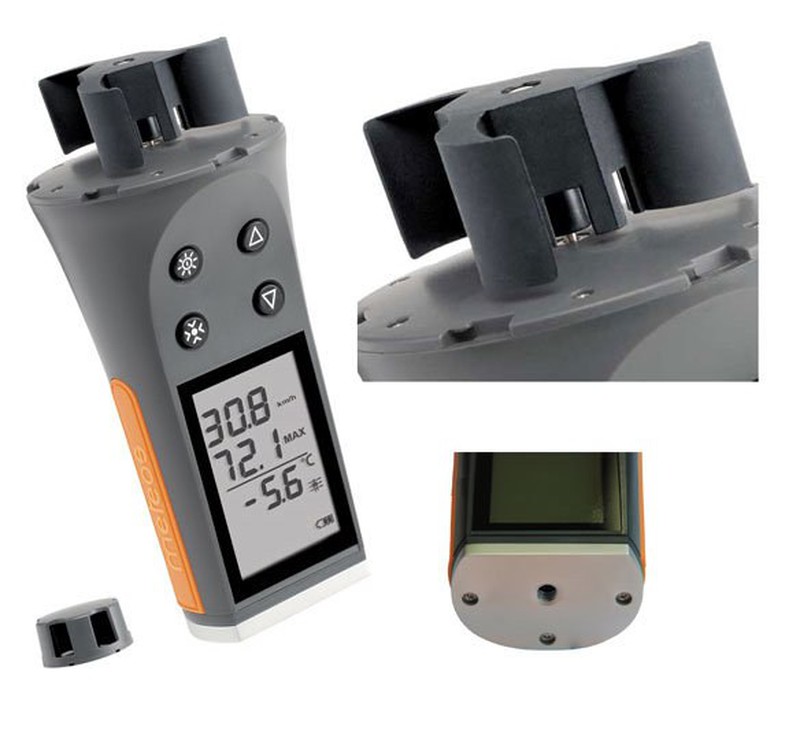Doubts and advice on anemometers
Anemometers serve to measure the speed and direction of the wind, but it is an instrument that can cause us certain doubts.

First of all we will distinguish between portable anemometers and fixed installation anemometers. The first are digital or manual field or campaign instruments, that is, they can be carried and used anywhere.
The second group corresponds to anemometers that always remain located in the same place, normally installed on top of a structure or support and associated with a digital or automated measurement system, either individually or as part of a meteorological station.
A second classification leads us to distinguish between models with mobile sensors and models with fixed sensors. The first are those with blades or pinwheels and the weather vane and the second are those that work by ultrasound and do not have a weather vane.
Portable anemometers are always with mobile sensors. In contrast, fixed installation anemometers can have both types of sensors.
Regardless of the quality of the sensors, sometimes we are surprised that two anemometers from two different stations and installed in the same place, set different speeds. To what is due?
The first reaction may lead us to think that one of the two is defective, but this is not usually the case. The problem lies in the operating mode of the mechanism and basically in the measurement range of the device.
The speed / streak measurement or pickup interval can range from 0.5 seconds to over 30 seconds. The greater this interval is, the less wind gusts it registers and therefore the smaller the speed and the maximum wind gust recorded. For this reason, if we are interested in this variable, we recommend devices with intervals less than 5 seconds and greater than 1 second.
In some portable windlass anemometers, the interval is less than 1.5 seconds and the team ends up overestimating wind speed and gust.
The anemometer should always be installed in the most open place possible and with no nearby obstacles such as trees, walls, walls, buildings, etc. The World Meteorological Organization establishes that official anemometers must be installed in a 10m turret or mast. Tall. In applications such as agriculture this varies and they are usually installed on a tripod between 2 and 2.5m in height.
Maintenance is important, both checking the condition of the cups and the wind vane, if they turn properly and if the material is in good condition. The verification must be extended to the transmission and validation of the values, this already through the corresponding software.
Maintenance should also be transferred to the wiring, in anemometers and digital stations it can happen that either the environment or some animals can damage the wiring, therefore it is recommended to protect it with a foam or plastic cover.
This is a common question in the store. Sometimes we are only interested in wind speed and we just want to buy an anemometer that transmits the data to a screen or computer.
This digital option at the domestic level and at affordable prices does not exist today. Digital anemometers that can work autonomously are designed for professional use, associated with a datalogger system and at higher prices. The rest of the anemometers are part of the set of sensors or ISS, which forces the purchase of a complete automatic station.
It is also true that certain portable digital anemometers have a tripod screw inlet and can be installed permanently, being able to stay outside for a few hours or days, but in no case permanently.








Opinions of our clients
Receive our news